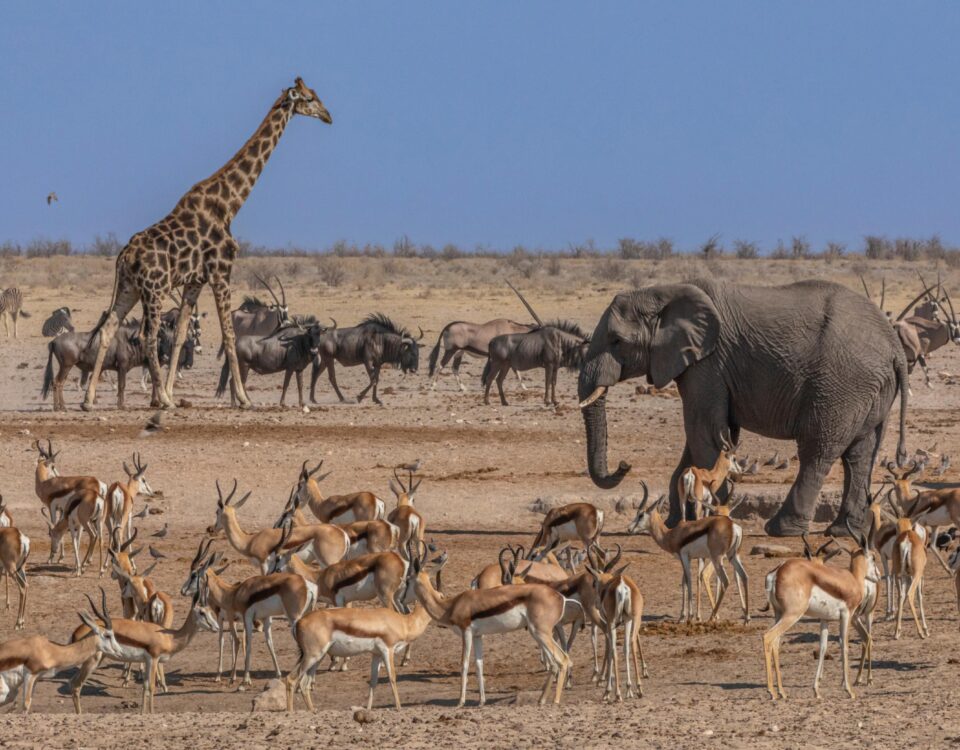
Game Guards trained to Prevent Poaching
January 9, 2019
NAPHA Conservationist of 2017: Manie le Roux
January 10, 2019It is estimated that Namibia has more than three million head of game, the majority of which is actually found outside formally proclaimed parks and is thus potentially available for sustainable use.
Wildlife undoubtedly has become an integral and essential part of the Namibian landscape – both visually and economically. Namibia’s rich wildlife resource already provides the basis for diversified economic development, through industries such as tourism, trophy hunting, meat harvesting, own use and live sale. In fact, it is estimated that over 80% of freehold farms utilise wildlife in one form or another, and the sustainable use of wildlife also underpins the success of the communal conservancy programme.
Indigenous wildlife species are well adapted to the naturally dry and/or variable climatic conditions that characterise Namibia, especially when able to move reasonably freely. And if climate change models are anything to go by – Namibia’s climate will become more arid, and more variable. In light of this, as traditional agricultural activities such as livestock production and dryland cropping become more marginal, the wildlife economy provides a viable, diversified and potentially more lucrative business opportunity. Furthermore, because it includes service elements (tourism, trophy hunting, live capture and sale) and value addition (trophy manufacturing, tanning of skins), the economic impact is multiplied several fold, as job opportunities (and career paths) are created, also in rural areas.
But the question is – are we making the most of this valuable asset? Is the full value being realised from every animal harvested?
Simply put, the answer is no, and it is for this reason that the wildlife products industries (game meat and taxidermy) were among the ten industries identified by Government to have the potential for growth, and for which “Industry Growth Strategies” were developed and are being implemented. The aim is to support local value addition, product and process innovation and upgrading, as well as market diversification – and supporting forward and backward linkages along the wildlife products value chain and within the Namibian economy at large.
Namibia’s competitive advantages and opportunities
There has been a considerable increase in game meat production in Namibia since independence. However, between 2001 and 2013, exports were inconsistent, with volumes fluctuating between less than 100 tonnes to more than 2 000 tonnes per year. Then exports dramatically decreased, as a result of the cessation of exports to the EU due to contamination concerns. It is estimated that Namibia could be losing more than N$ 30 million annually alone by not exporting to the EU. However, Namibian game meat offers a premium product for the increasing global demand for a healthy, natural, hormone-free and ethical source of protein. Furthermore, when compared to competitor products from other countries, it is frequently observed that Namibian game meat and meat products tend to be of superior quality in both taste and appearance. Efforts are therefore underway to address the issues and resume exports of game meat, as well as make game meat a part of every Namibian’s diet.
When it comes to other wildlife products (skins, horns, bones), although some of these are used for value addition (hunting trophies, skins), many of them are currently regarded by land users of little or no value and are discarded. An example is the skins of springbok hunted for own use in conservancies (and on many freehold farms). And yet, shifts have taken place that have given the industry new opportunities for growth, e.g. a worldwide trend towards ‘bringing nature back into homes’, which also includes the use of processed animals as upscale home décor items. Wildlife products are also featuring in the tourism décor space. Due to these developments, taxidermy products are used in art, fashion and design in increasingly innovative and popular ways. This trend is an opportunity for Namibian taxidermists, craftsmen/women and artists to broaden their product ranges and improve their businesses. It also provides a means to maximise the economic value from every animal harvested, by making sure that all parts are utilised.
At the Inspiration Tables event in Windhoek in September 2017, examples of value-added wildlife products were showcased and proved that the seemingly “worthless” springbok skin can actually be transformed into a tanned skin worth N$ 300, which in turn can be handcrafted into several high-quality, beautifully designed handbags with retail values ranging from 800 to several thousand Namibian dollars. Developing these high- value end products further should ensure that some of the added value filters down to the wildlife producer, thus maximising the full value of every single animal hunted.
This article was first published in HuntiNamibia 2018.


